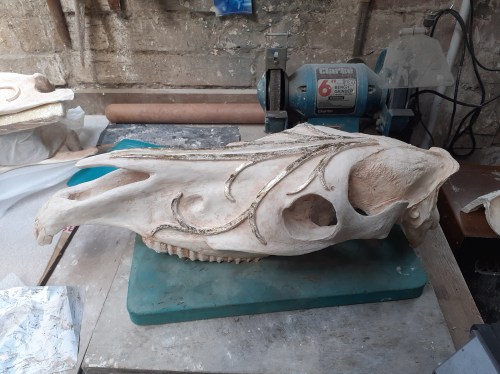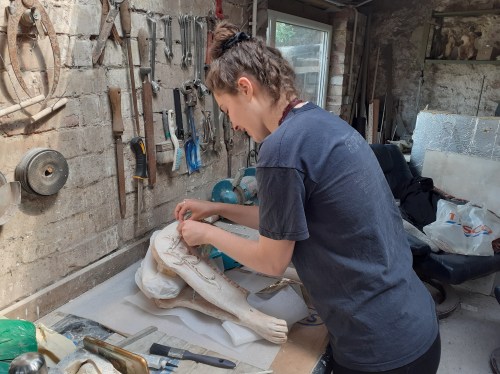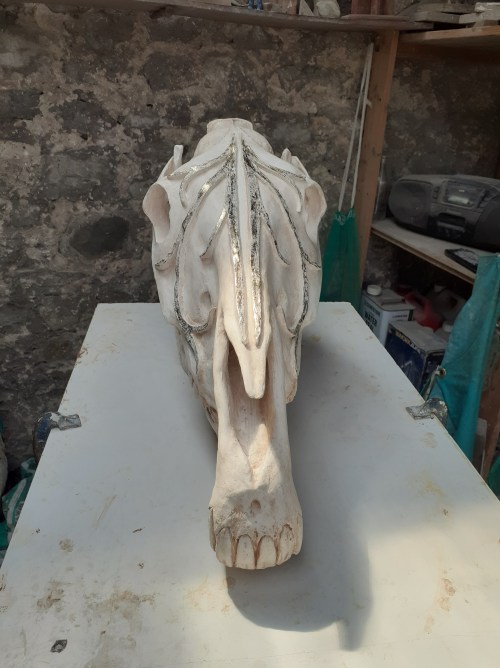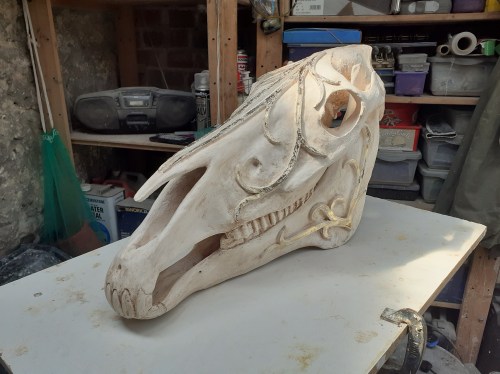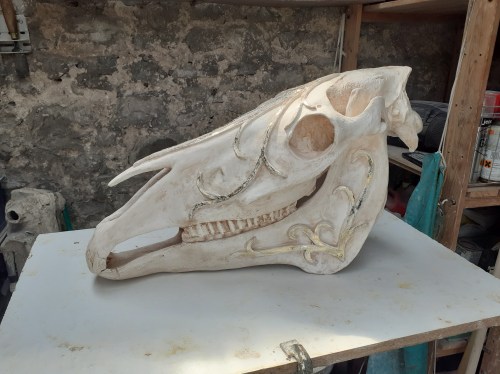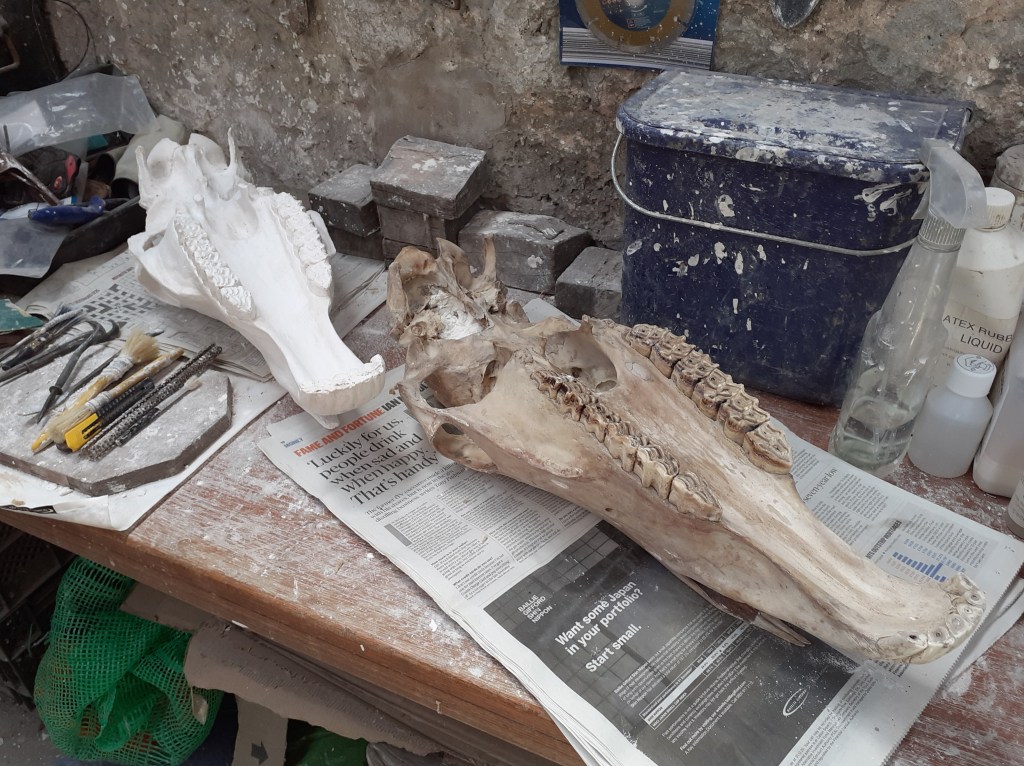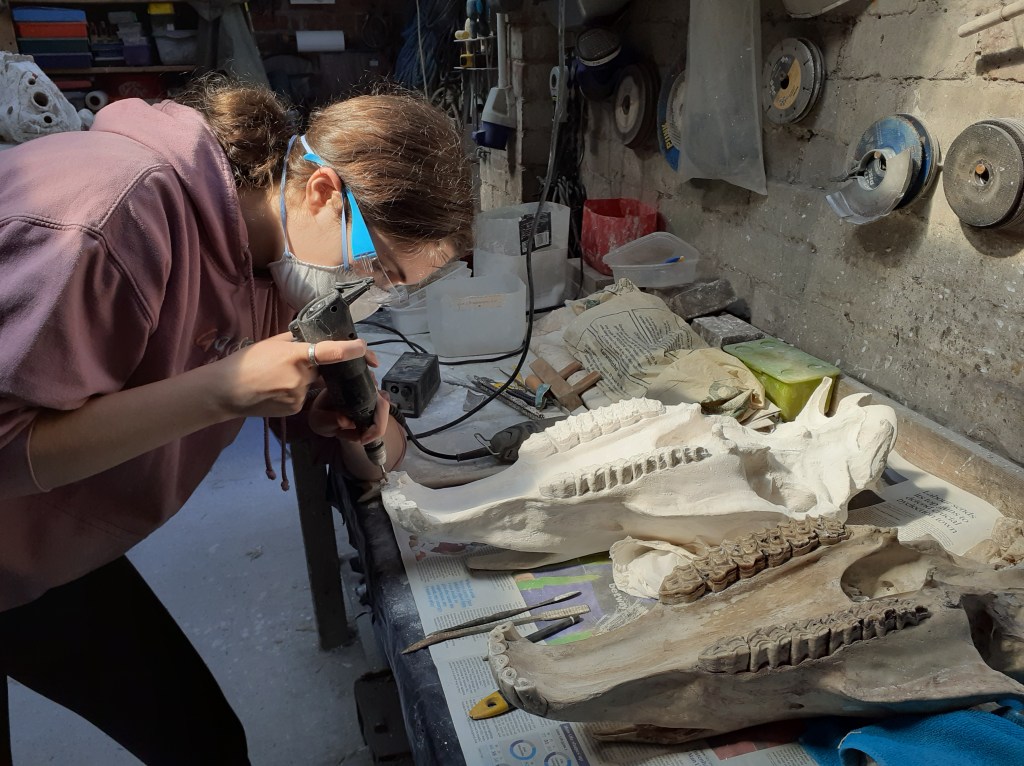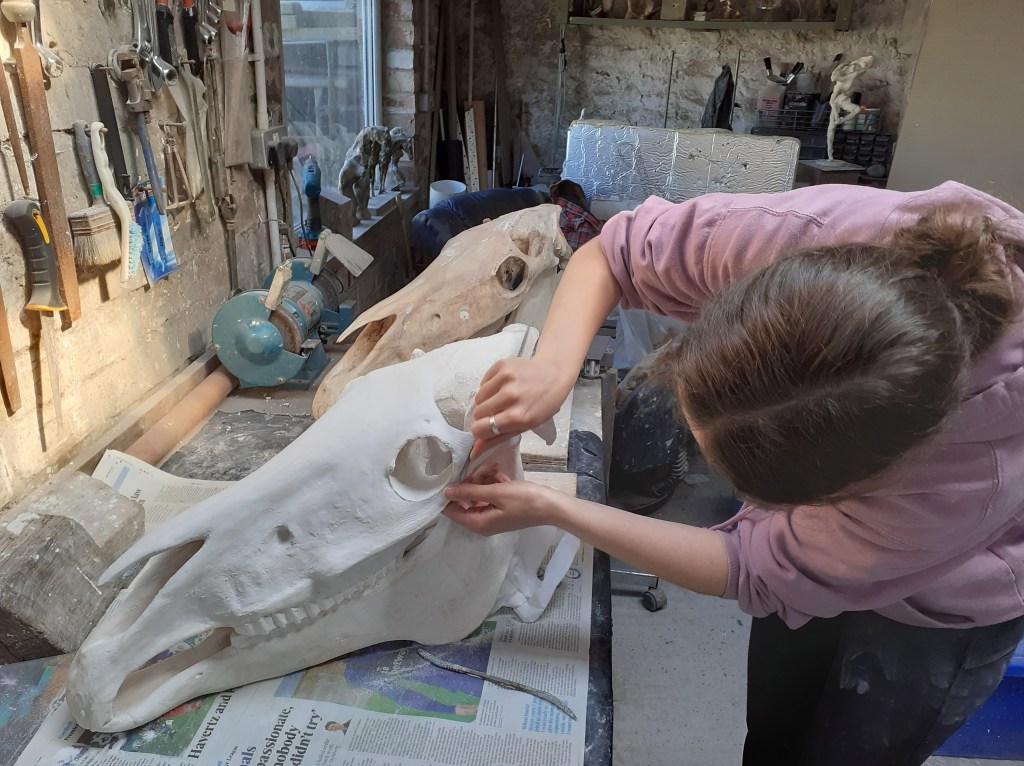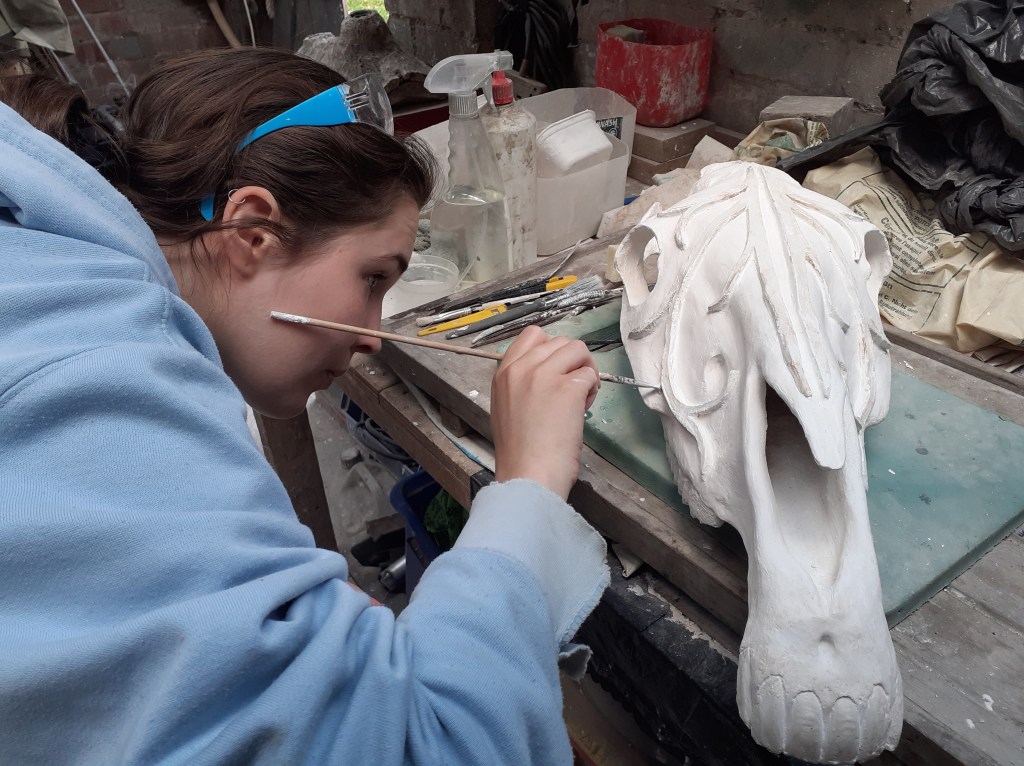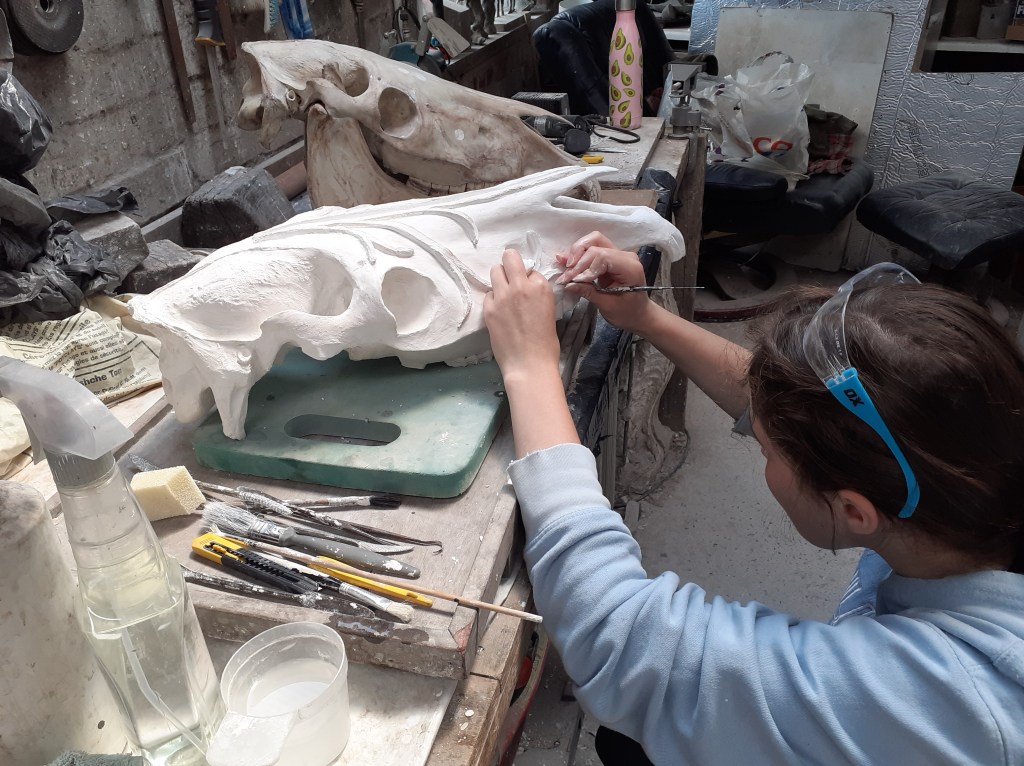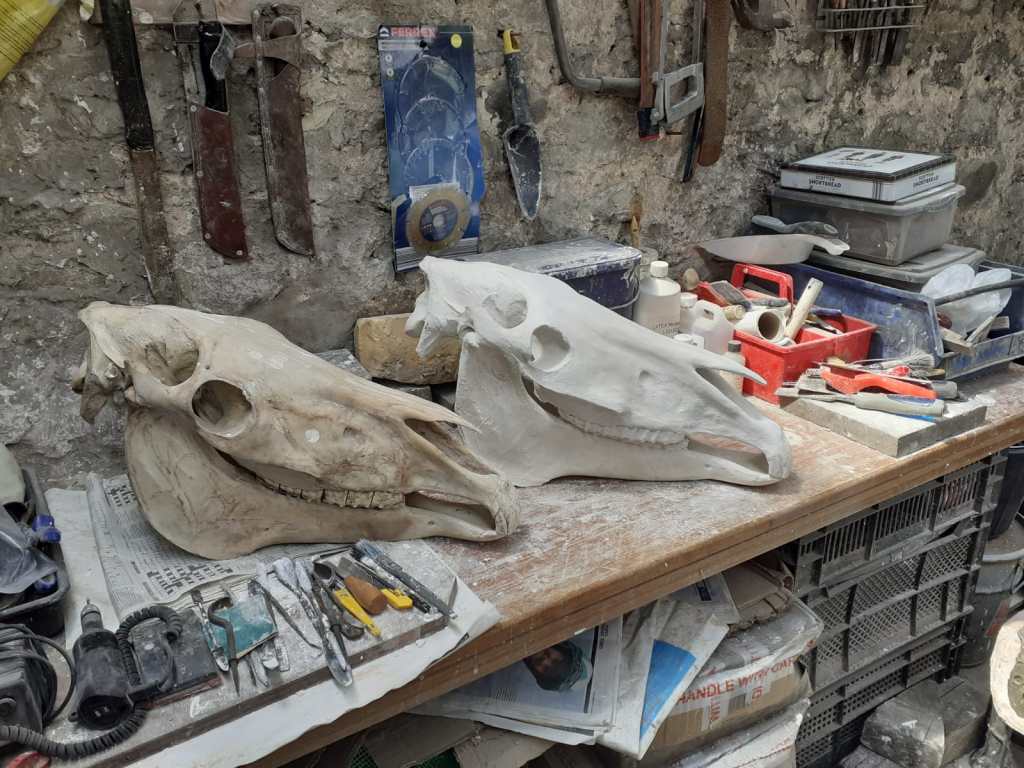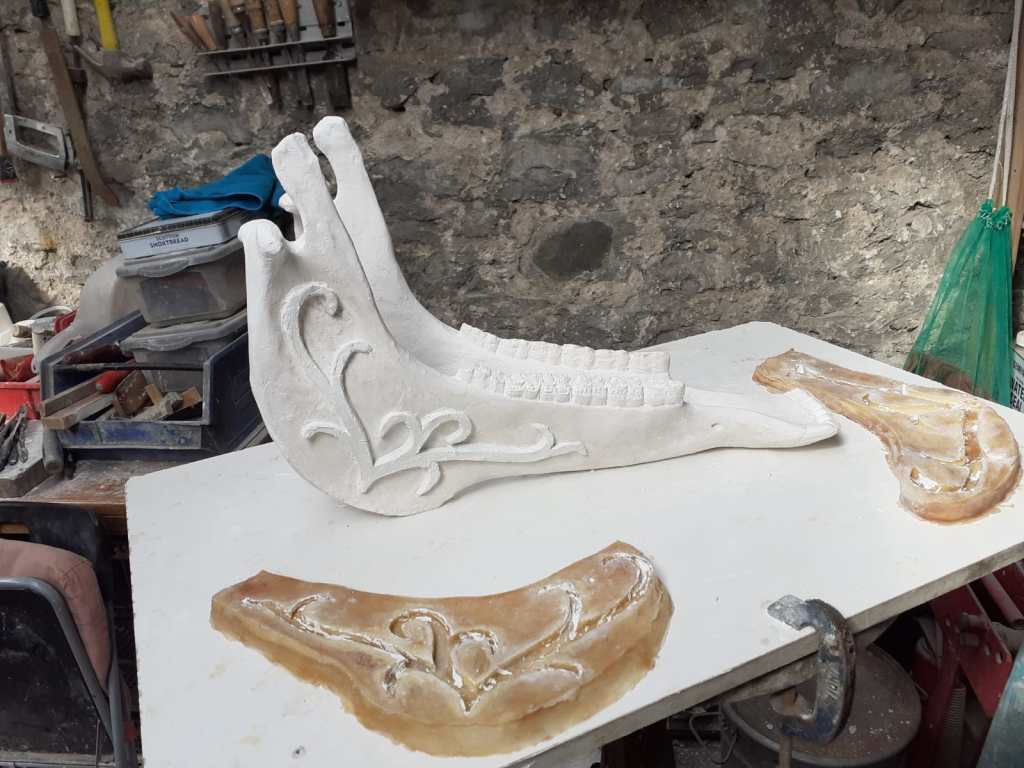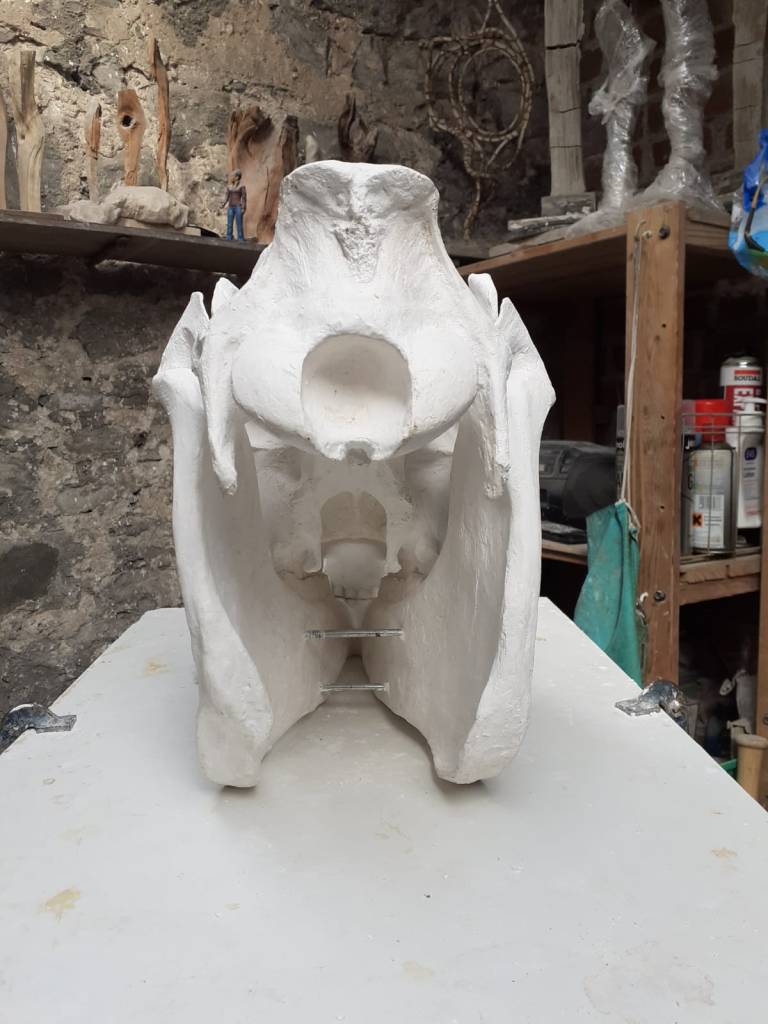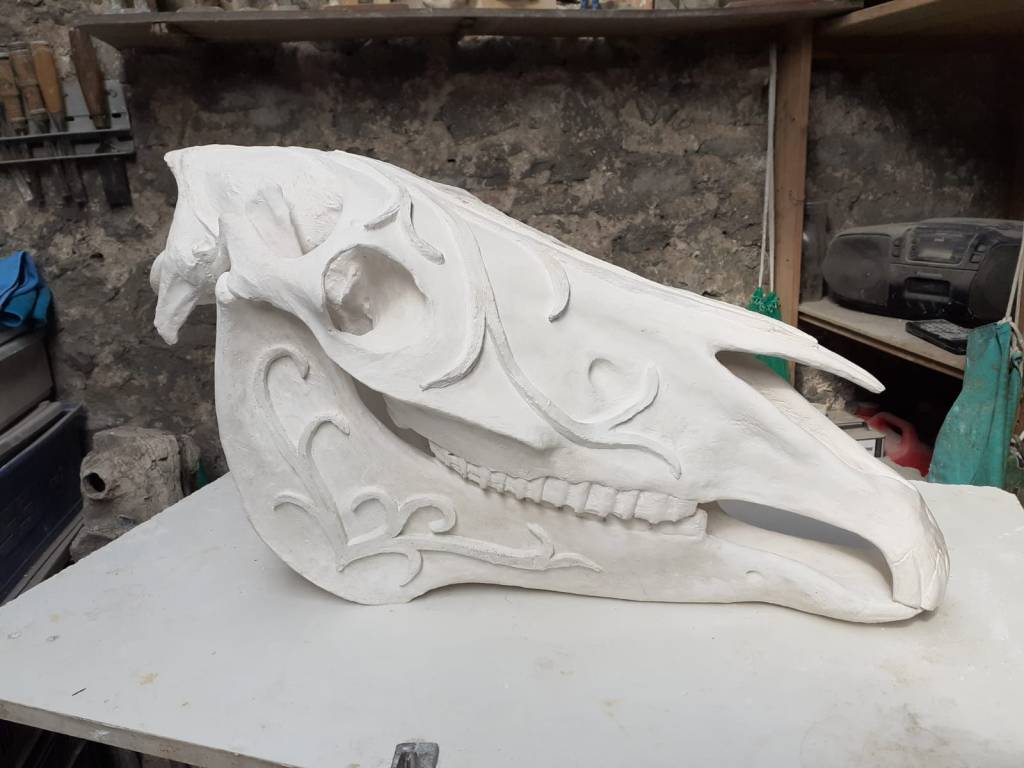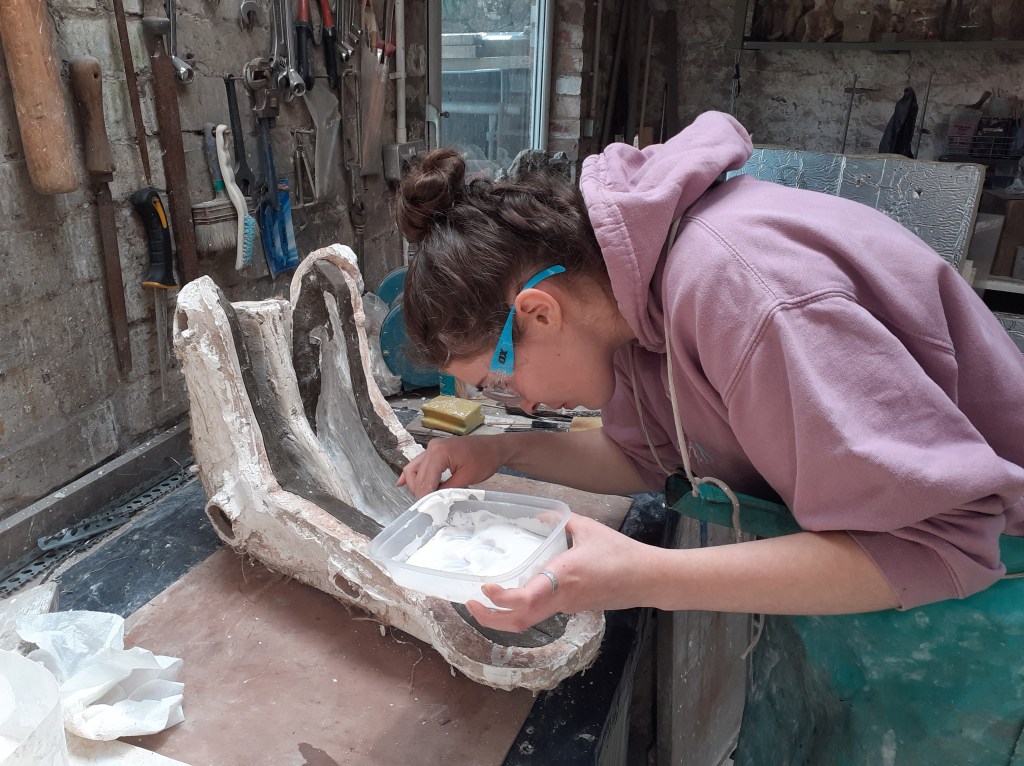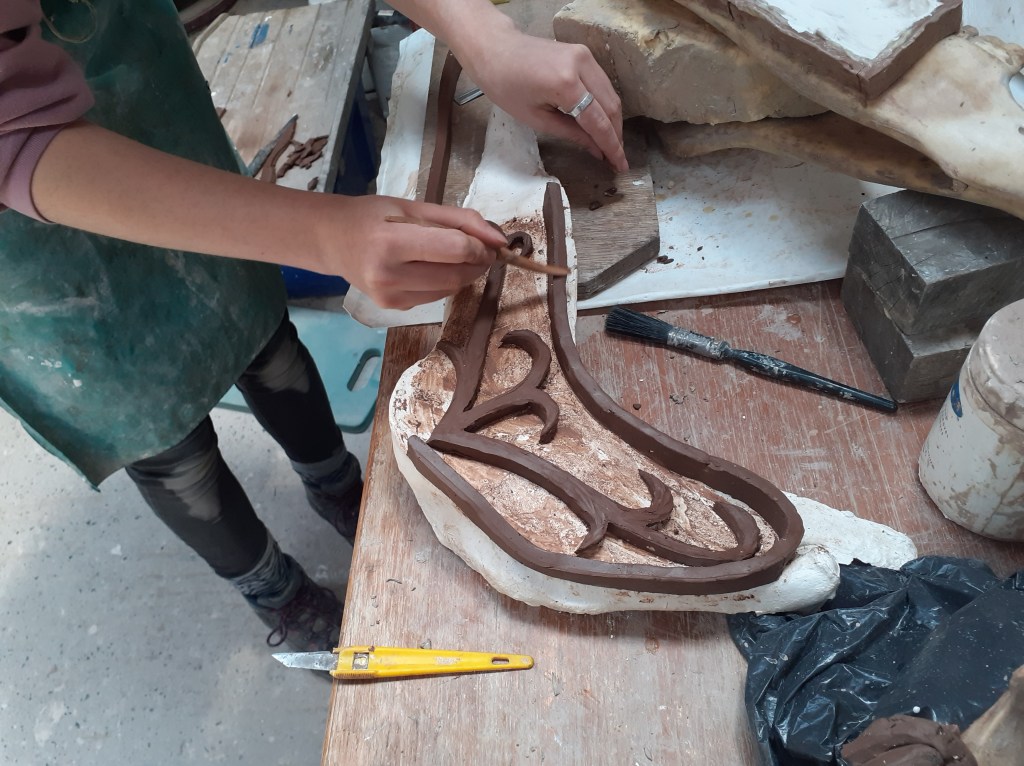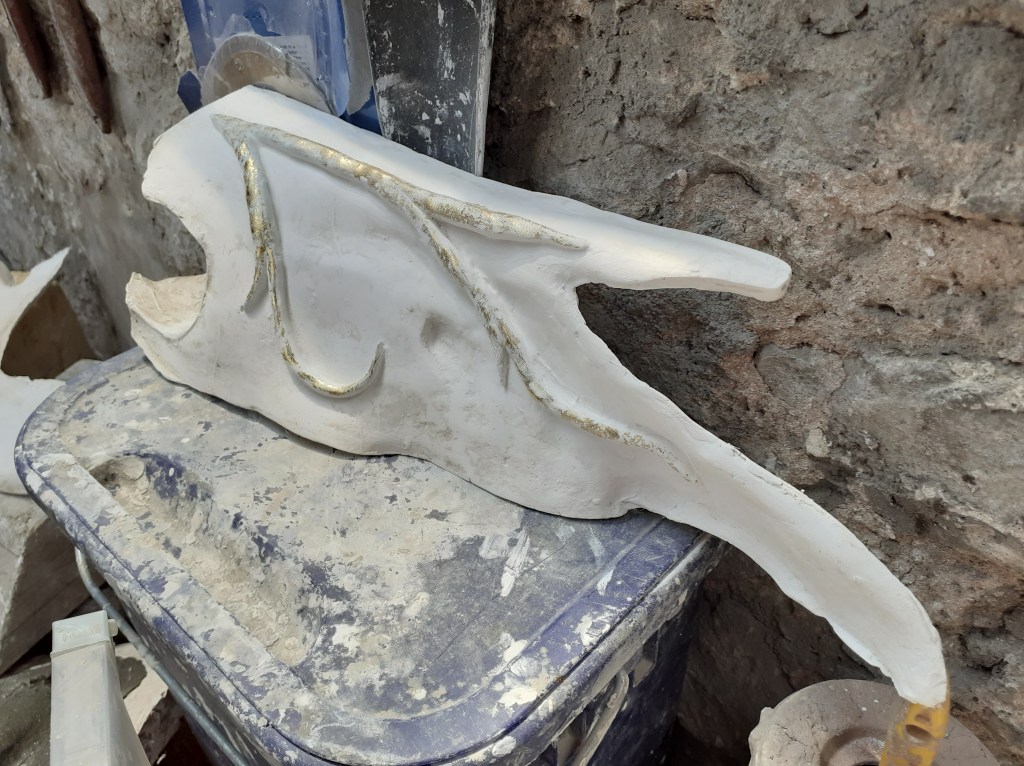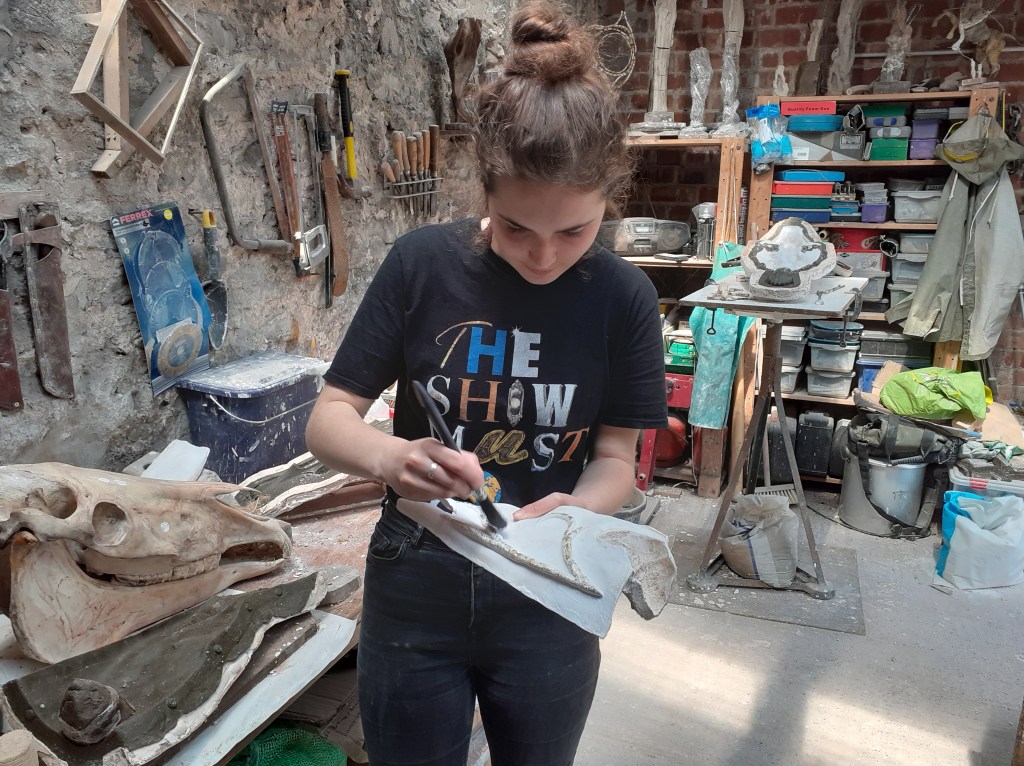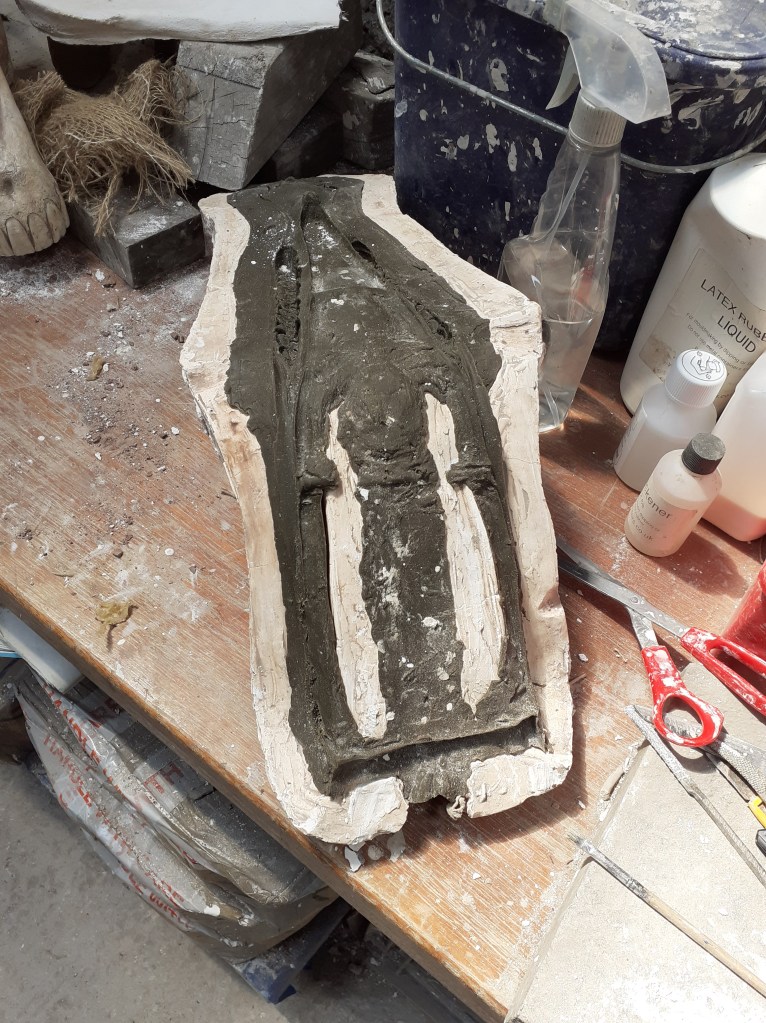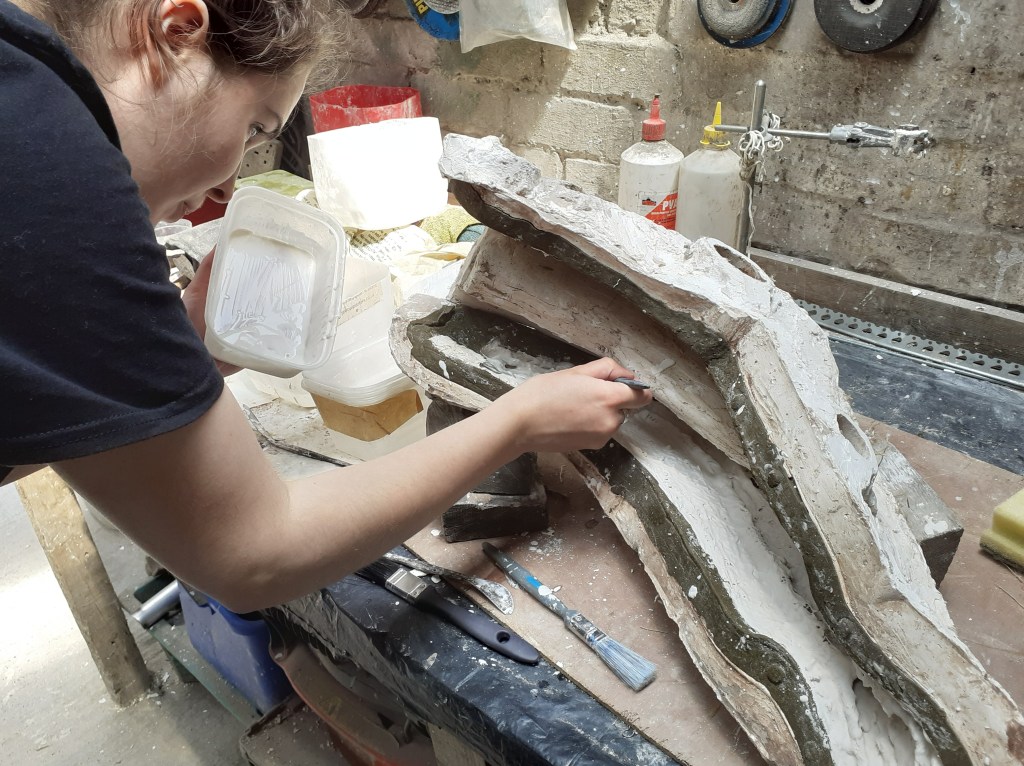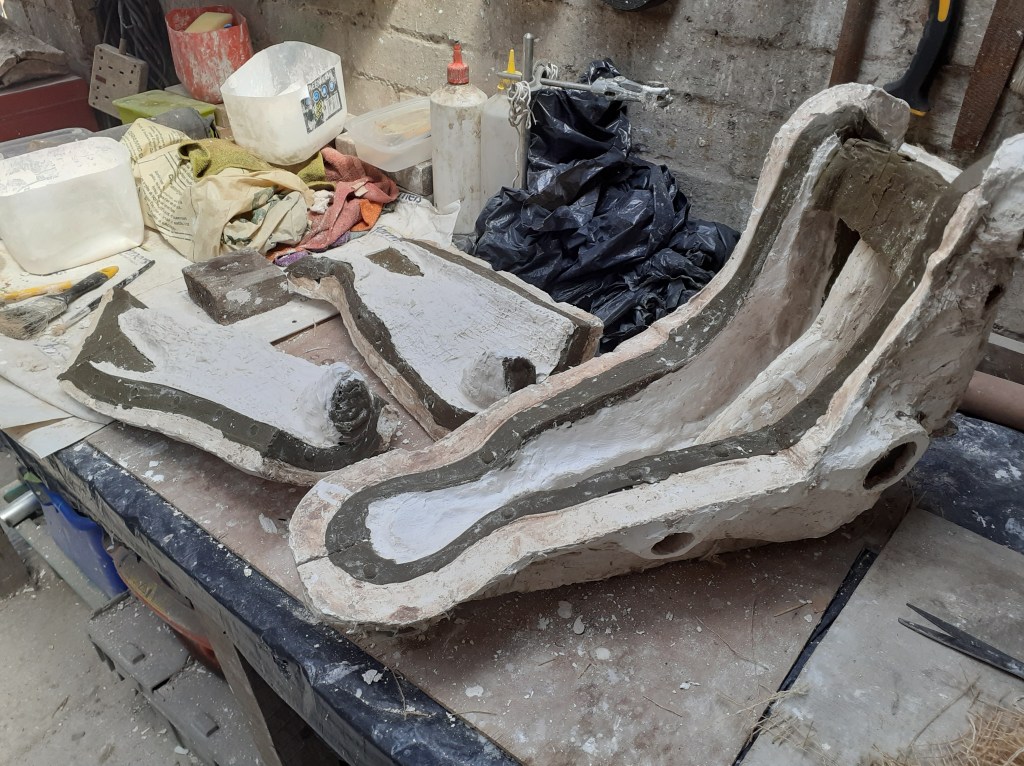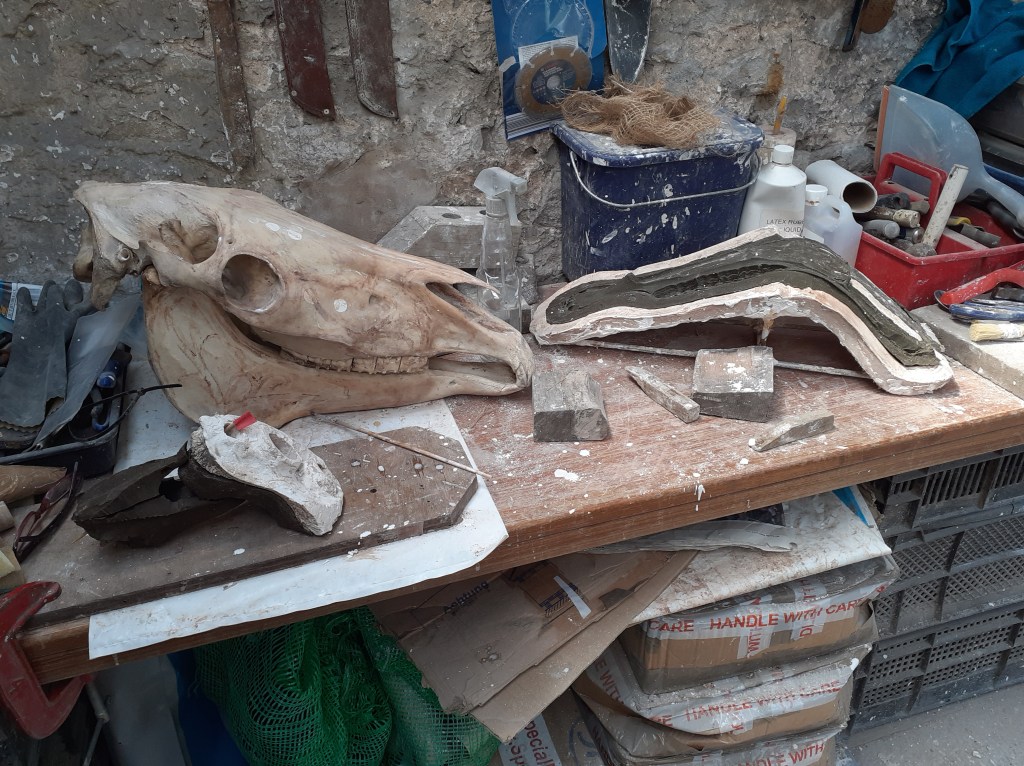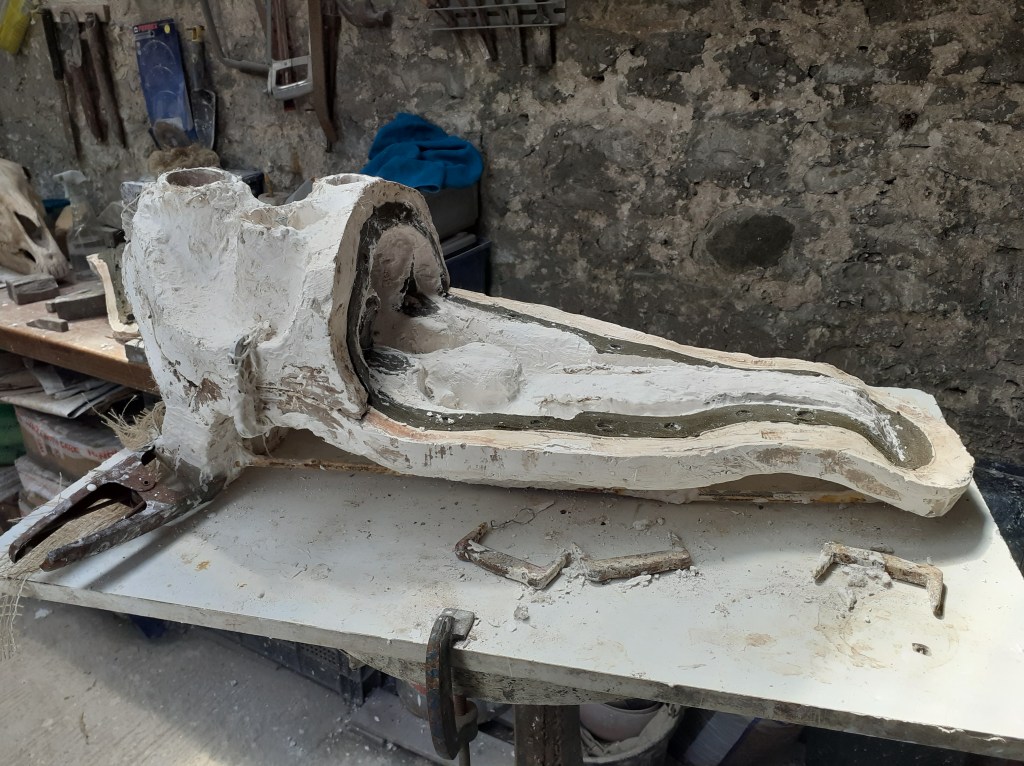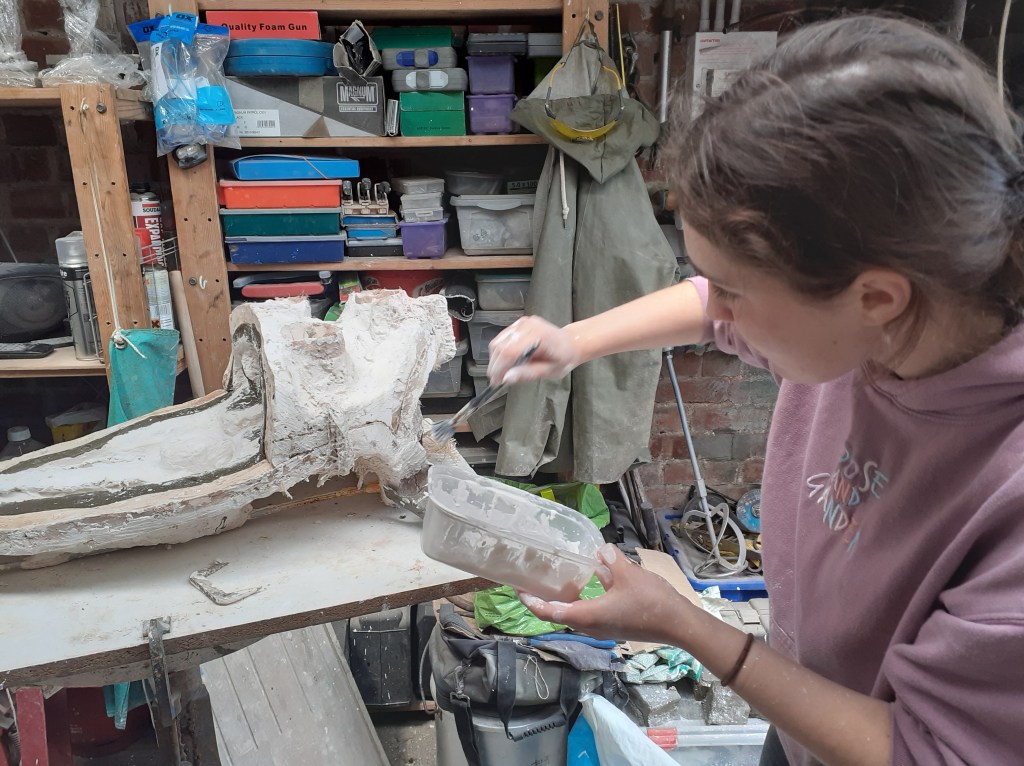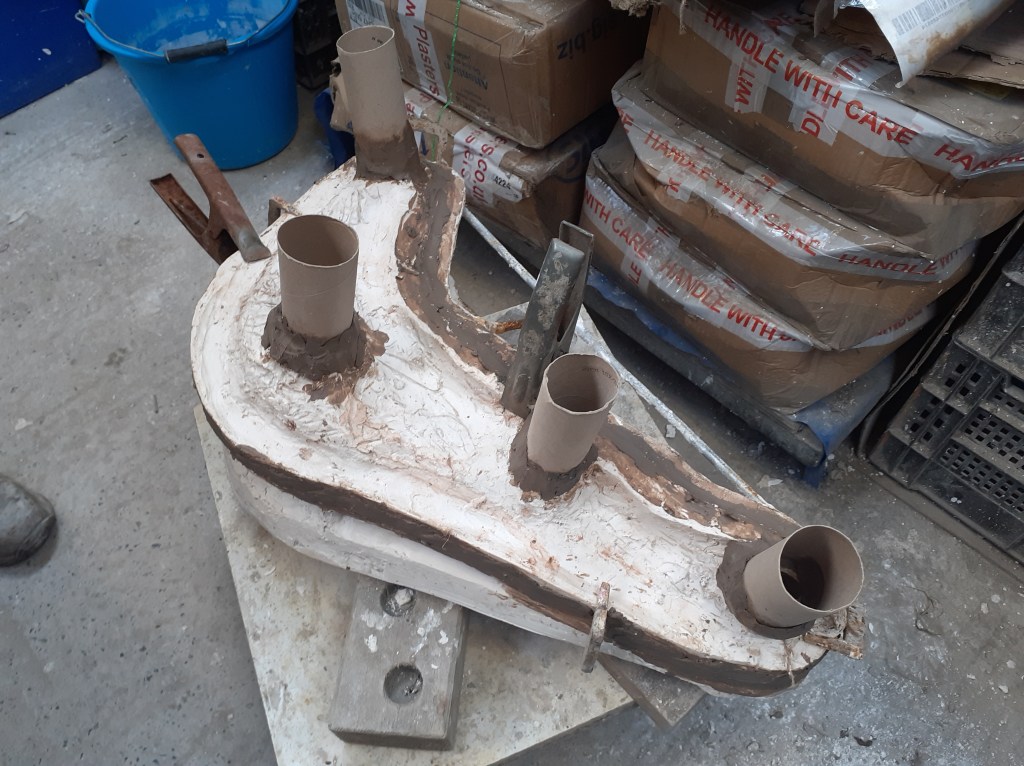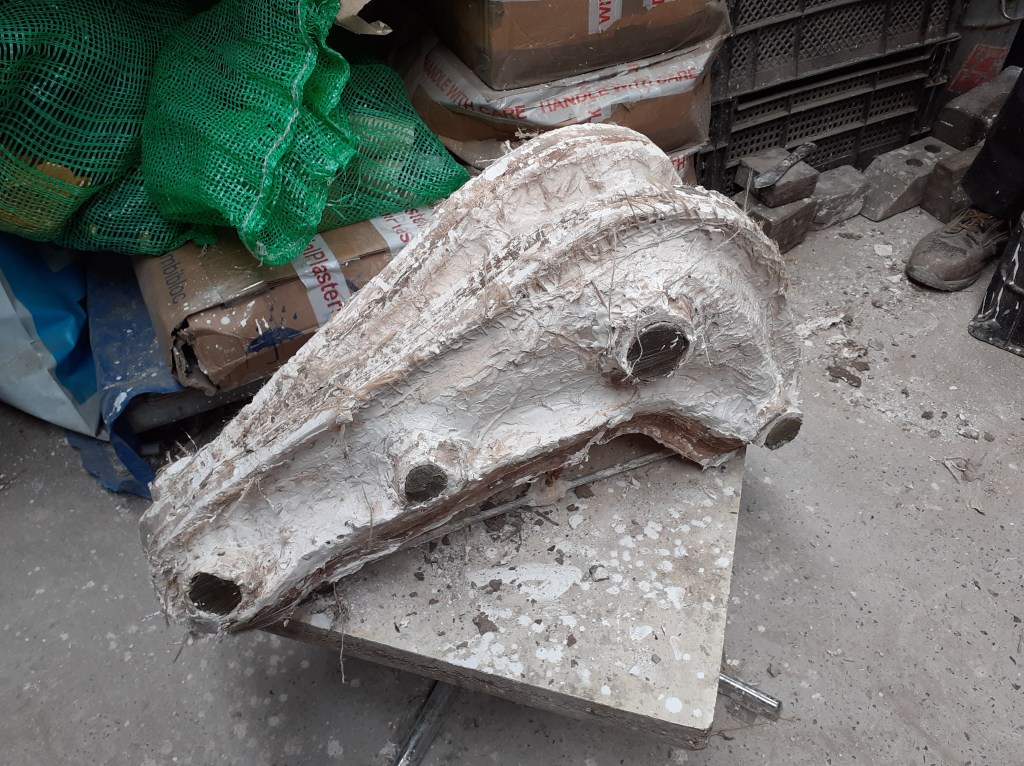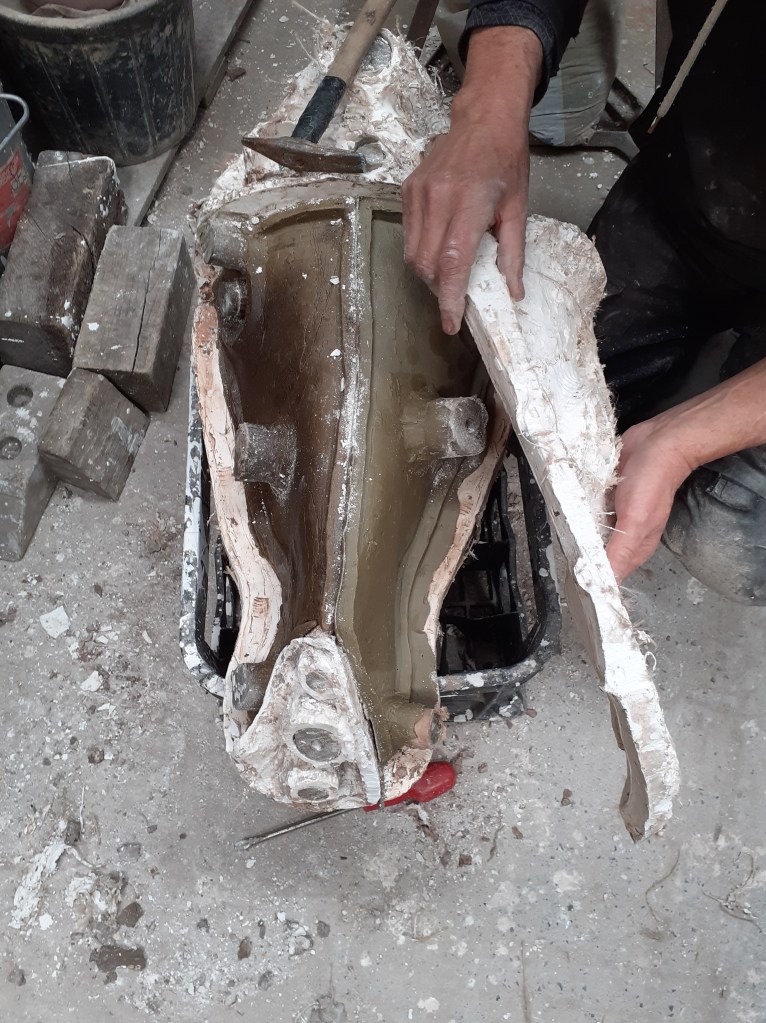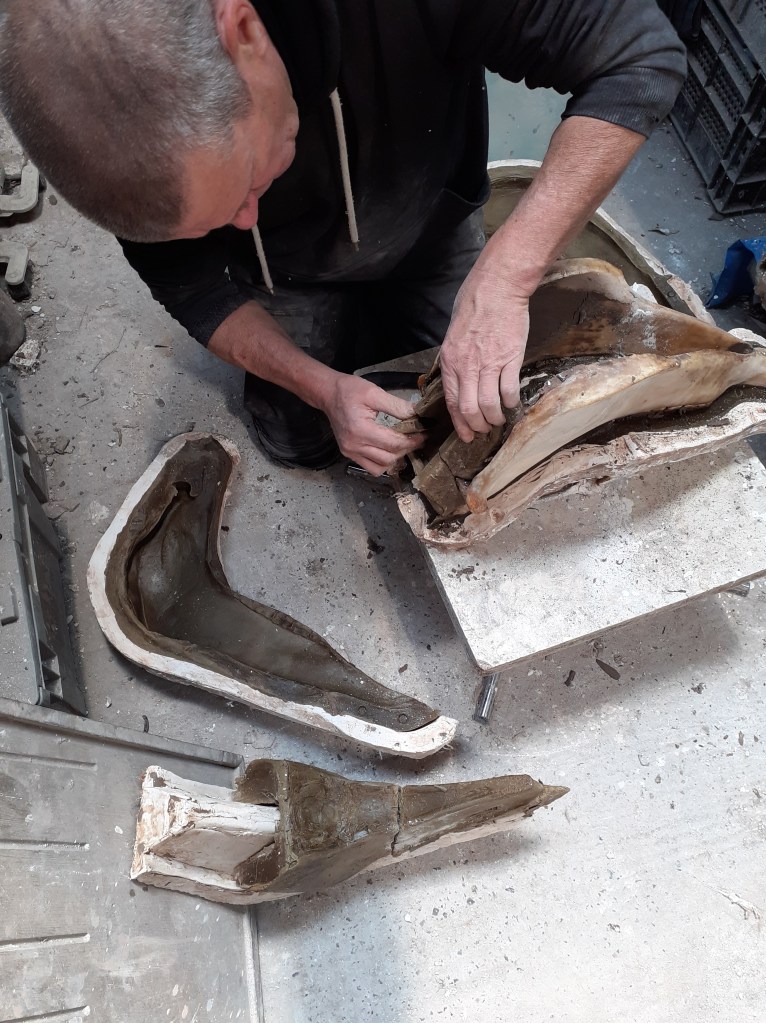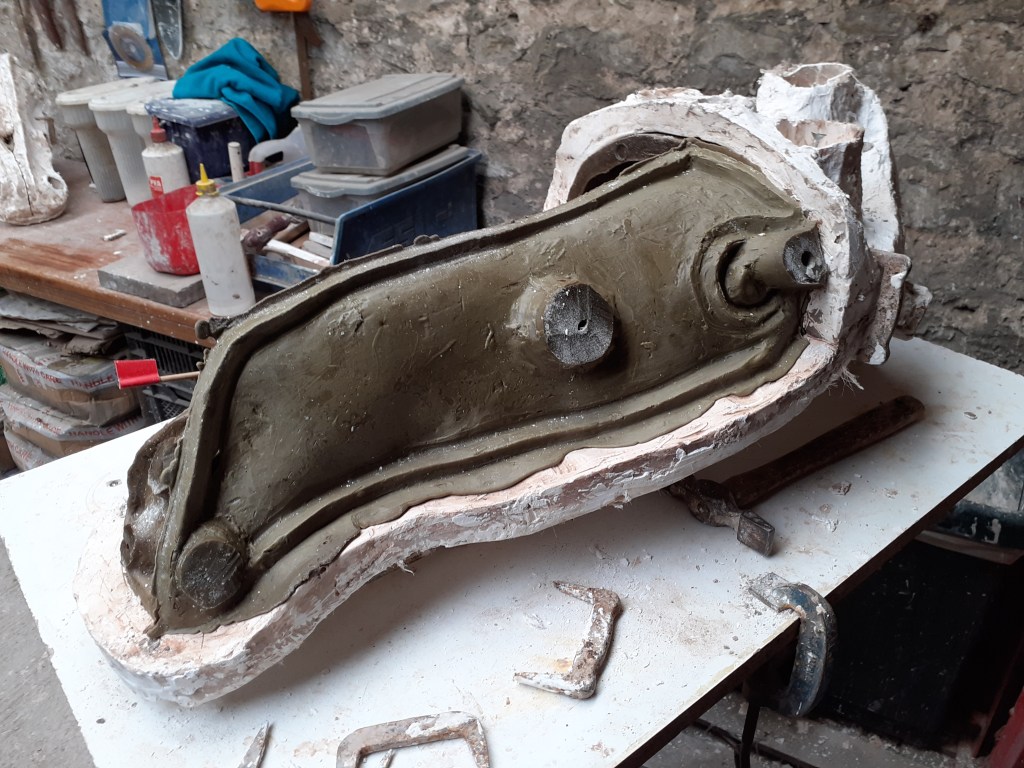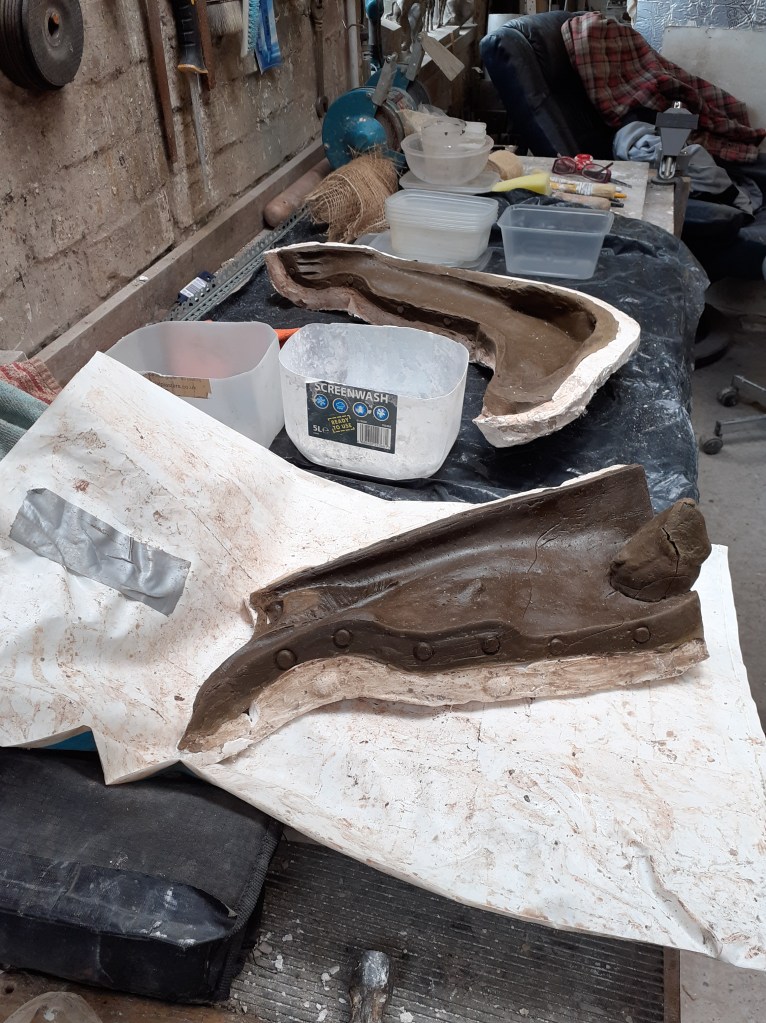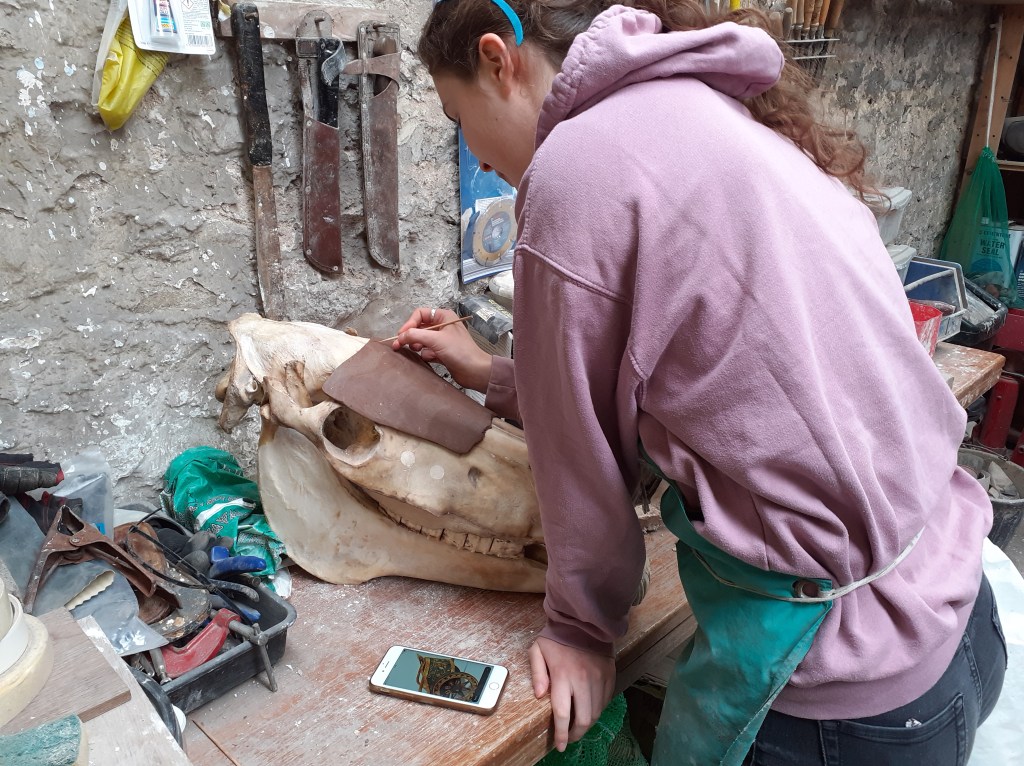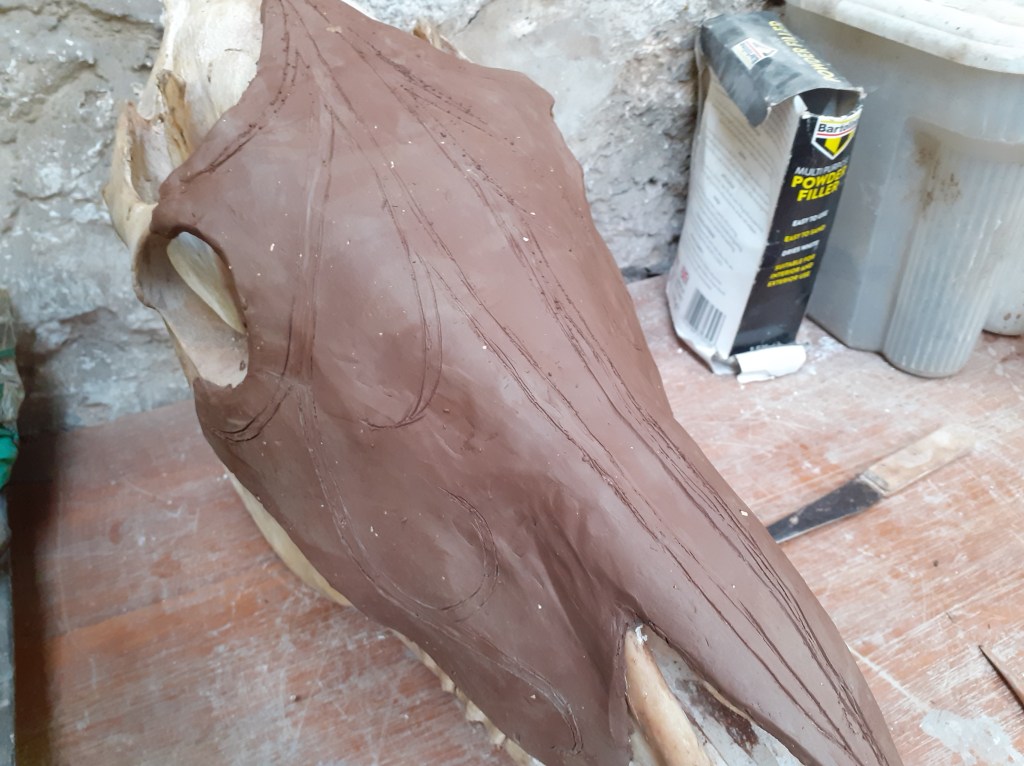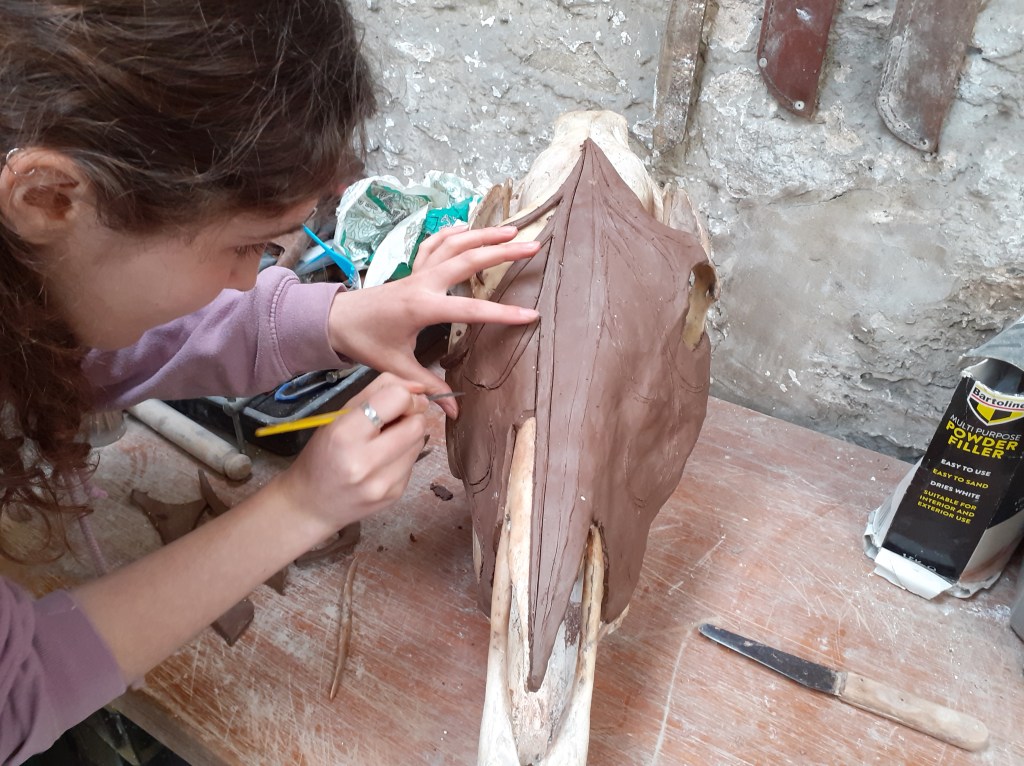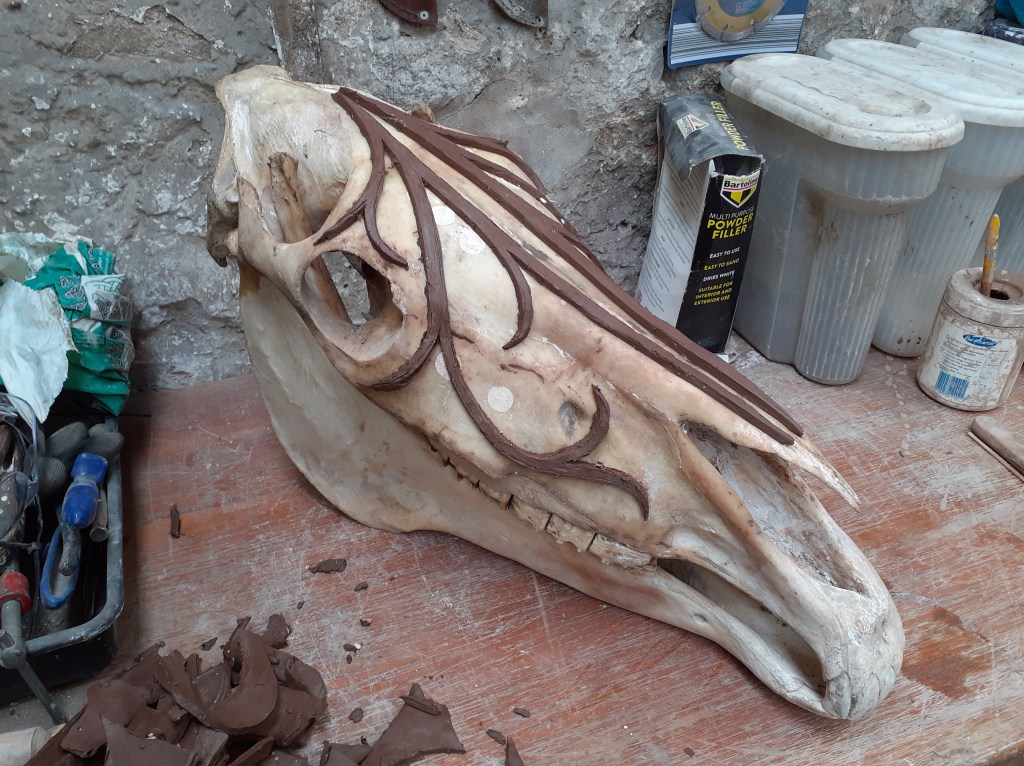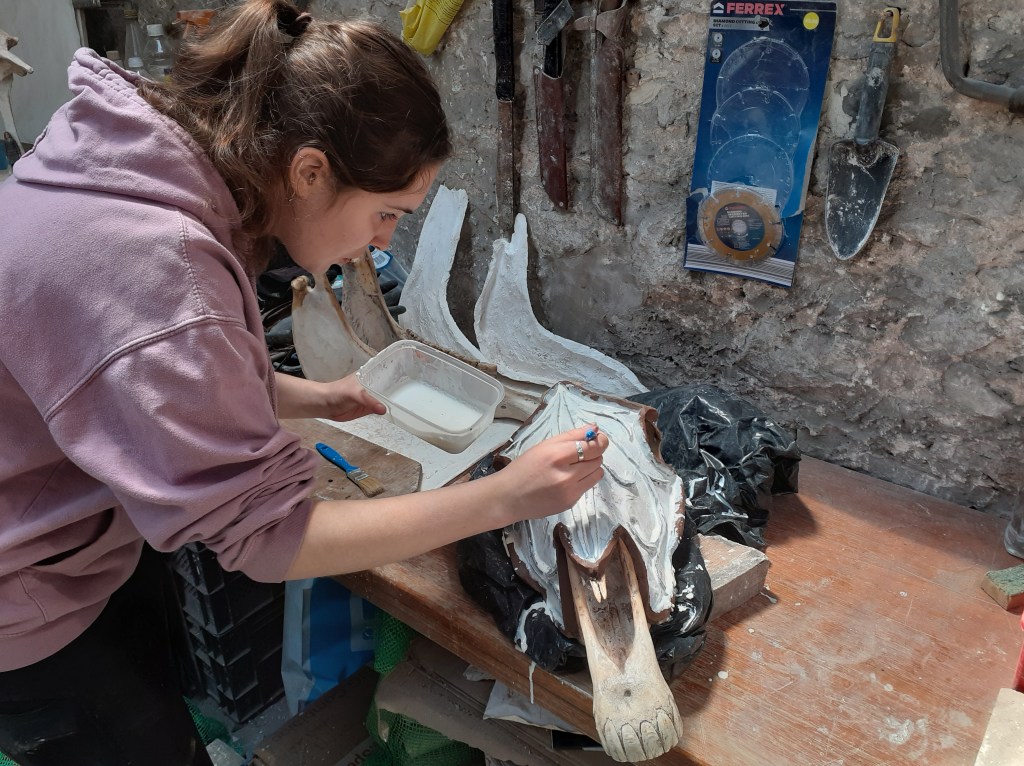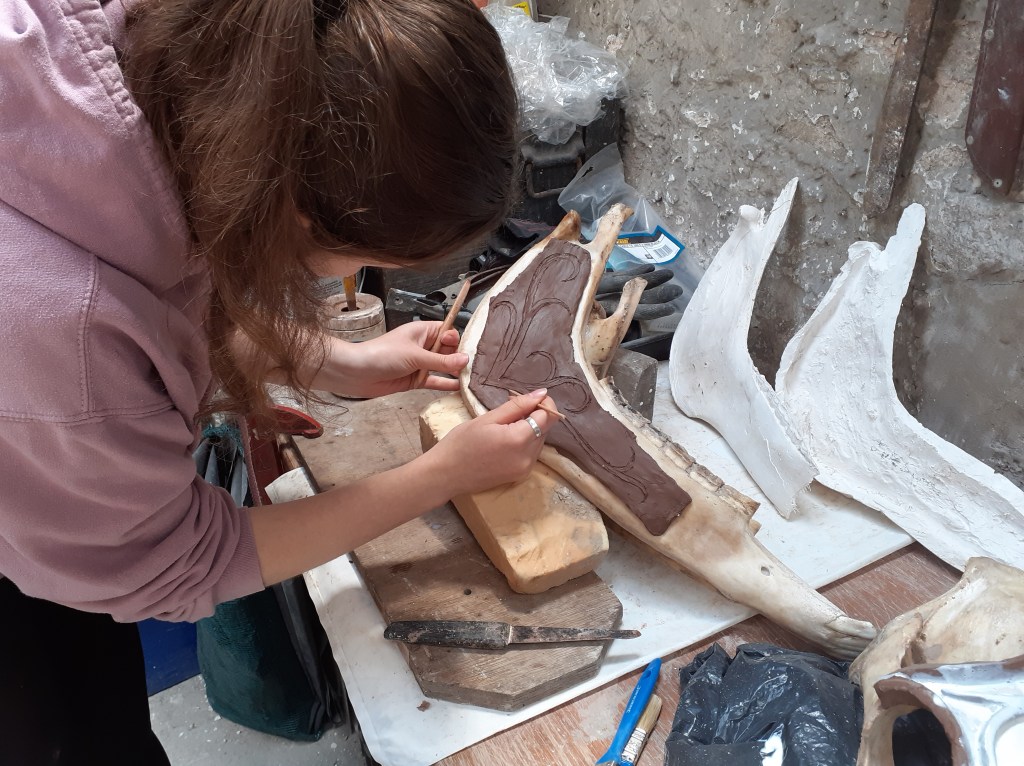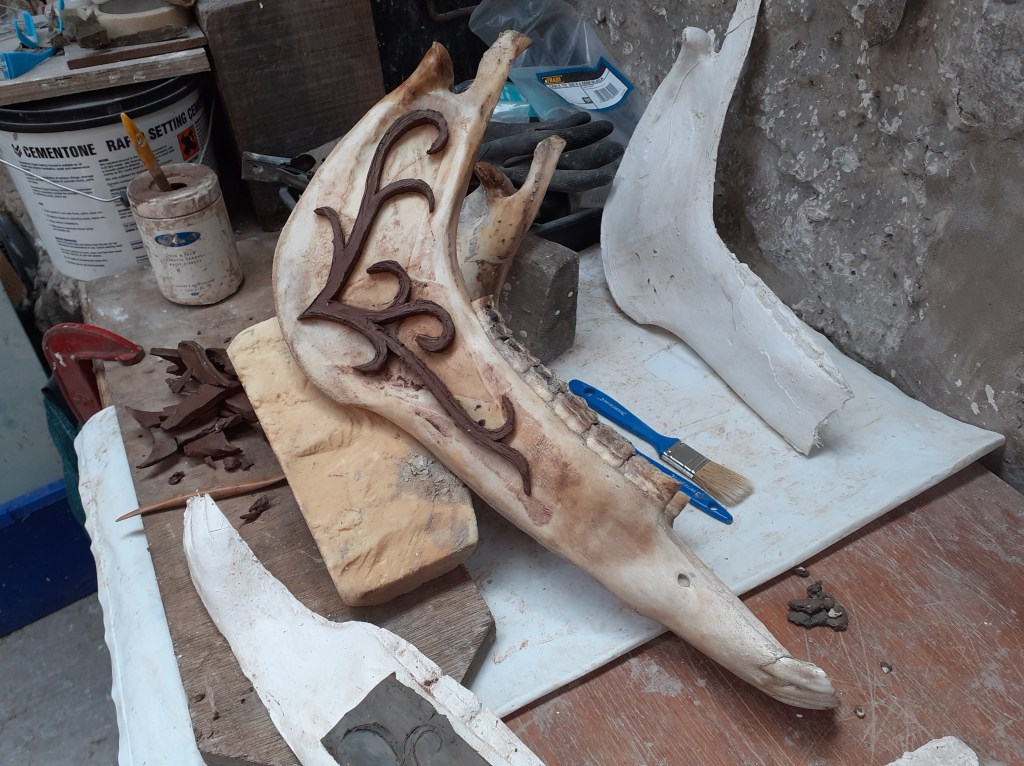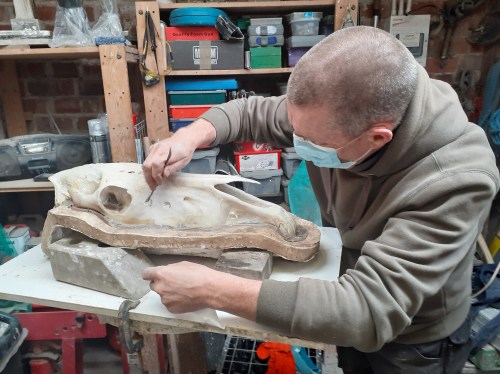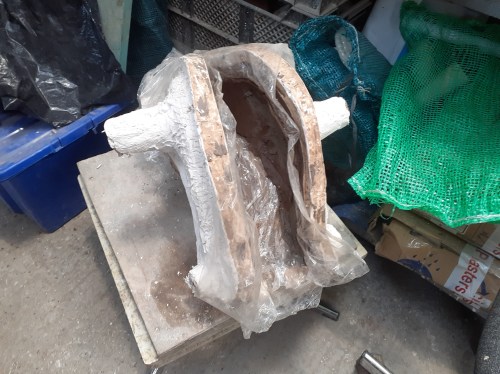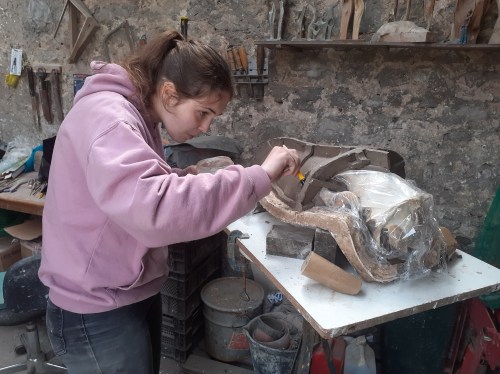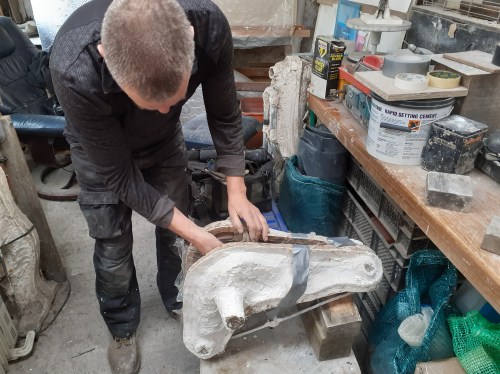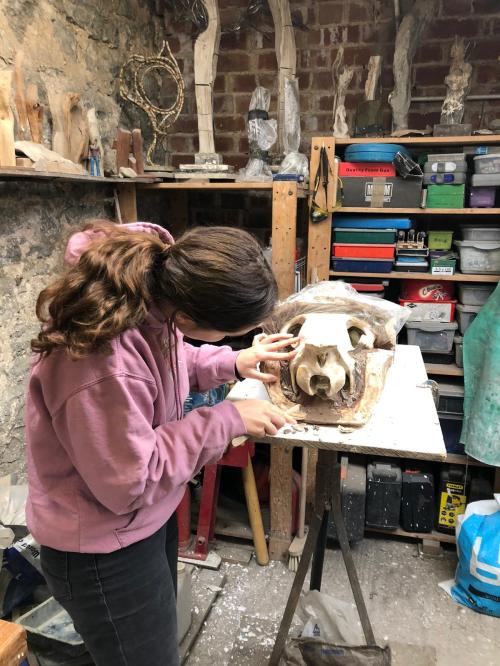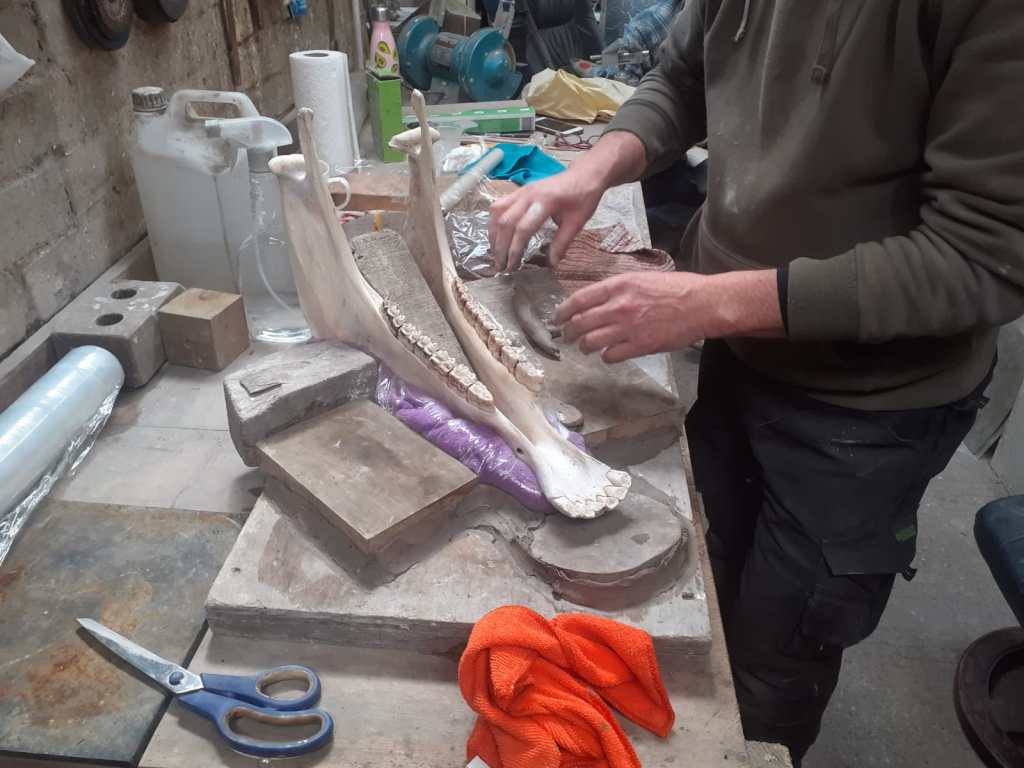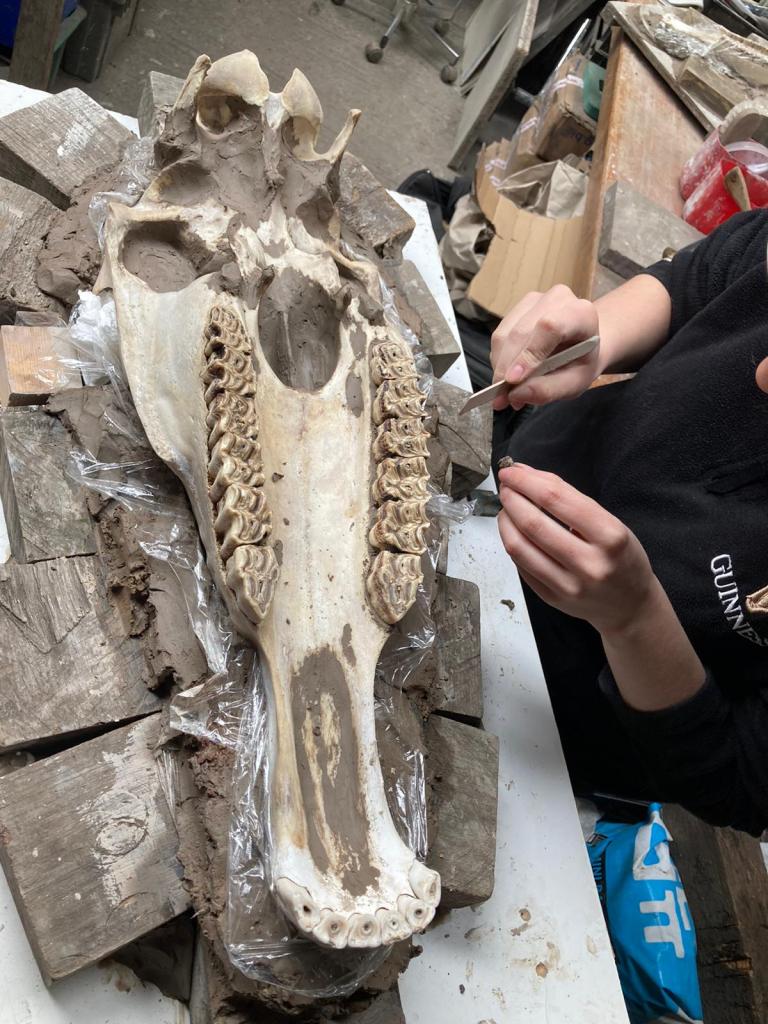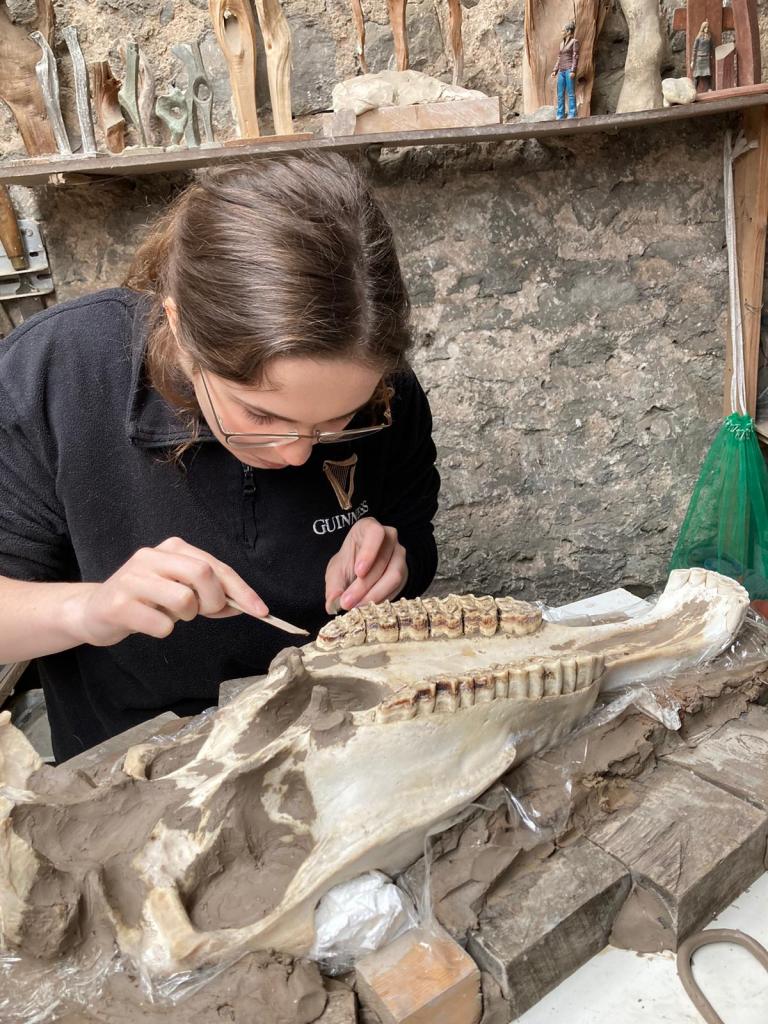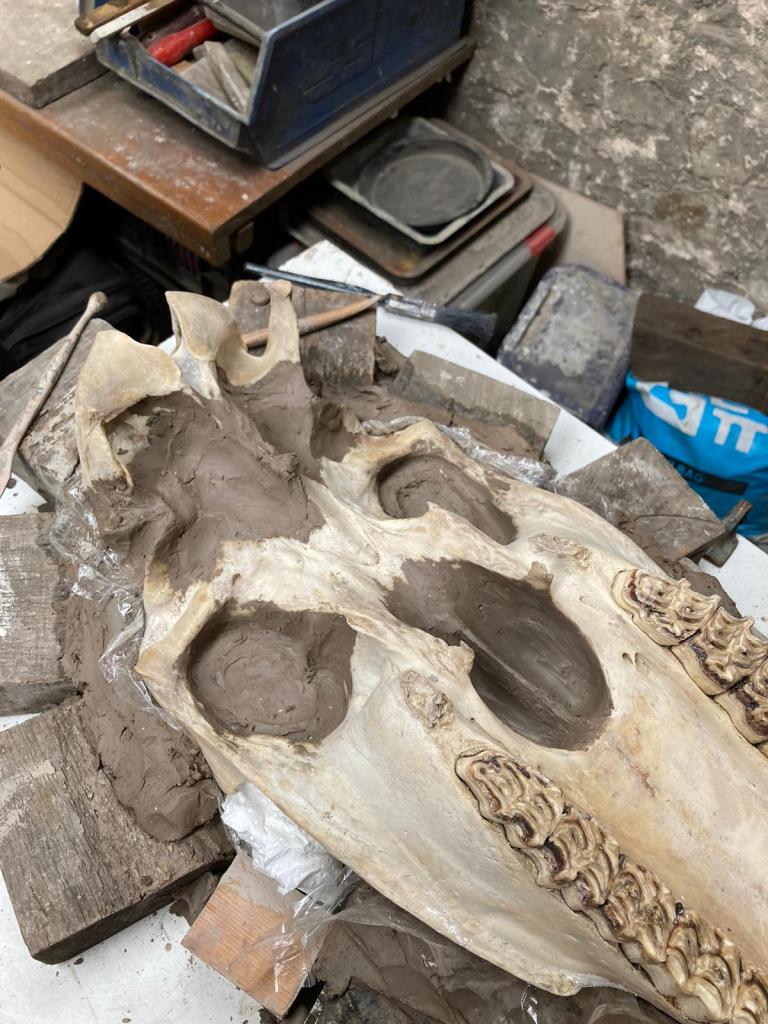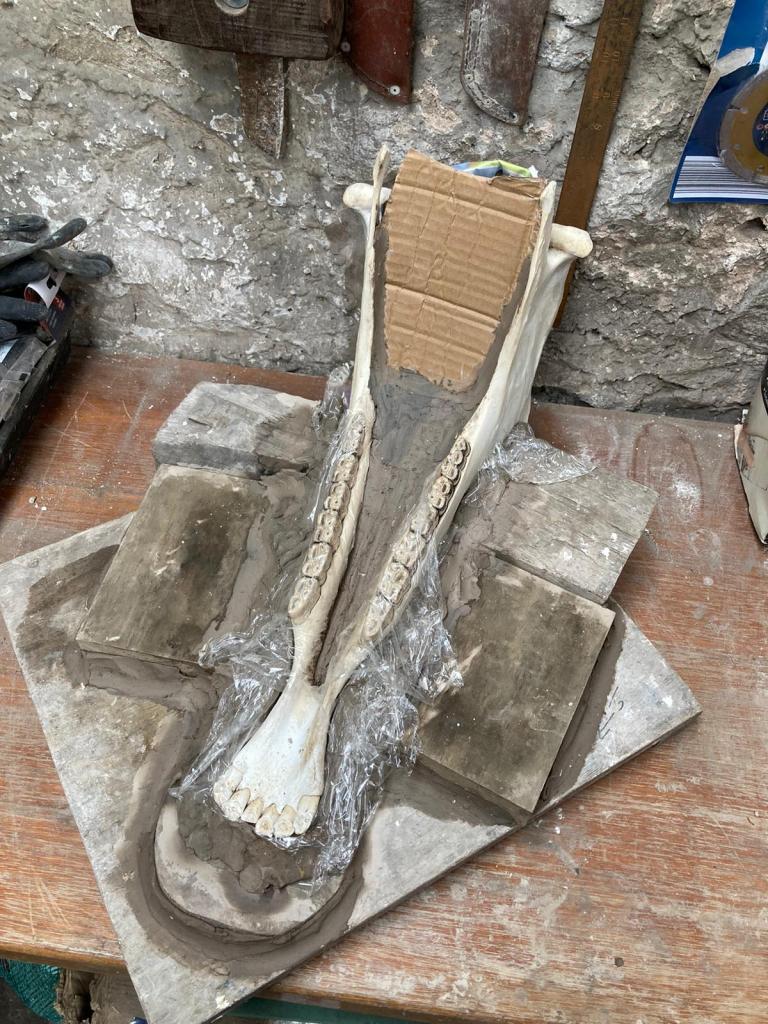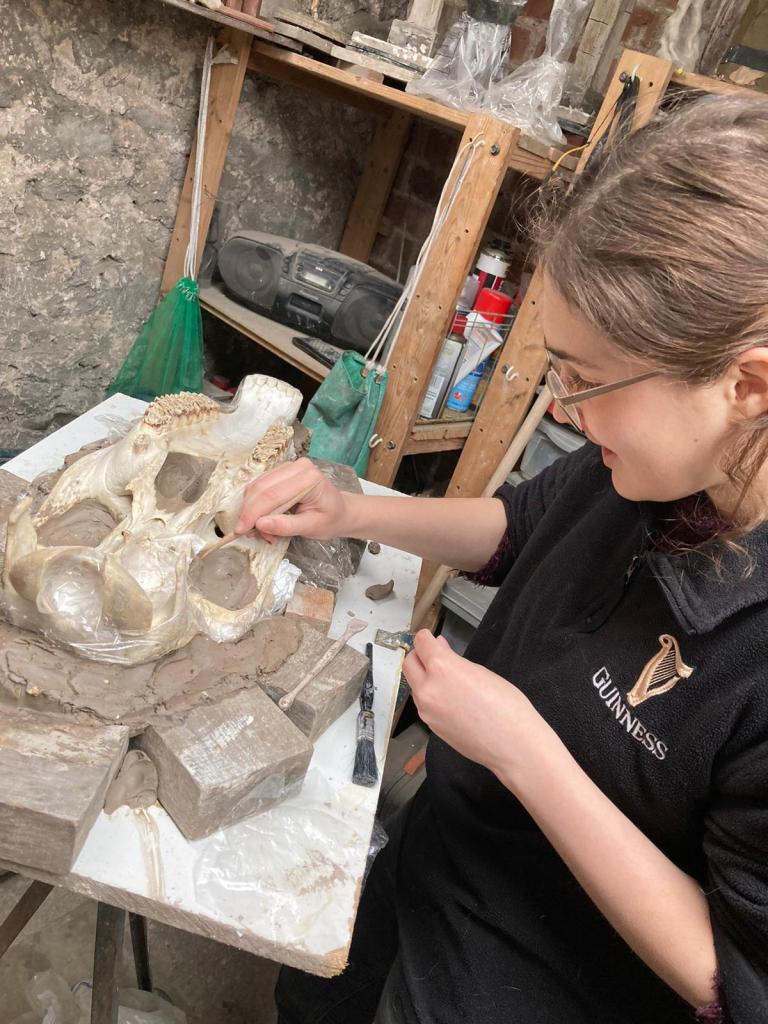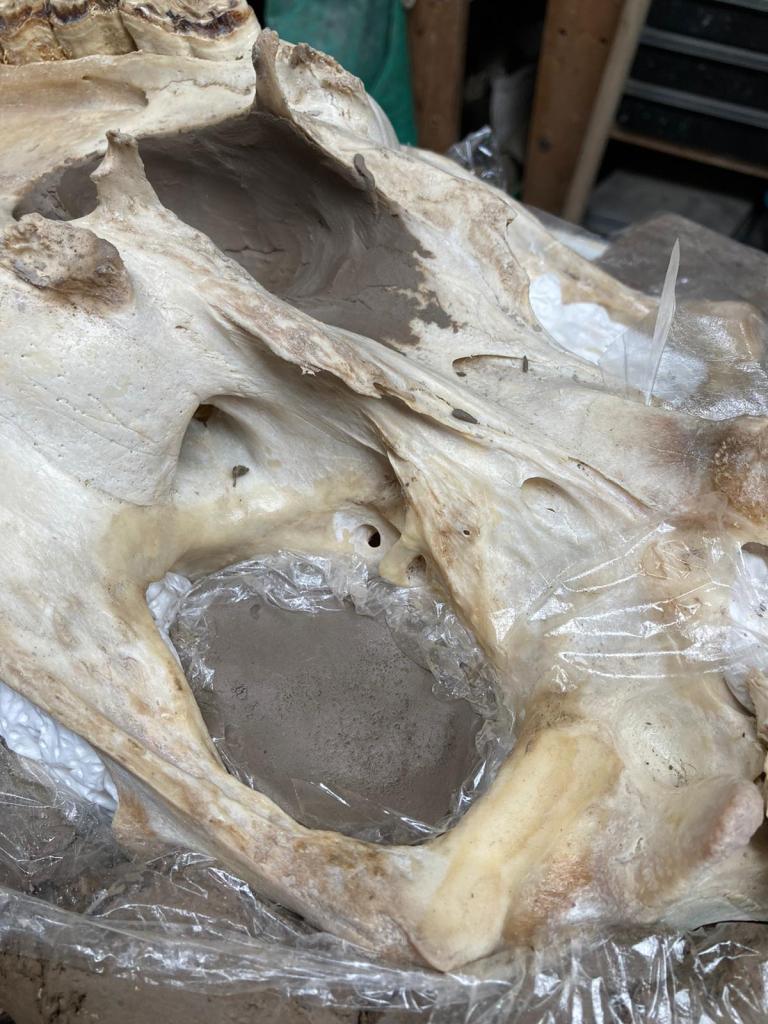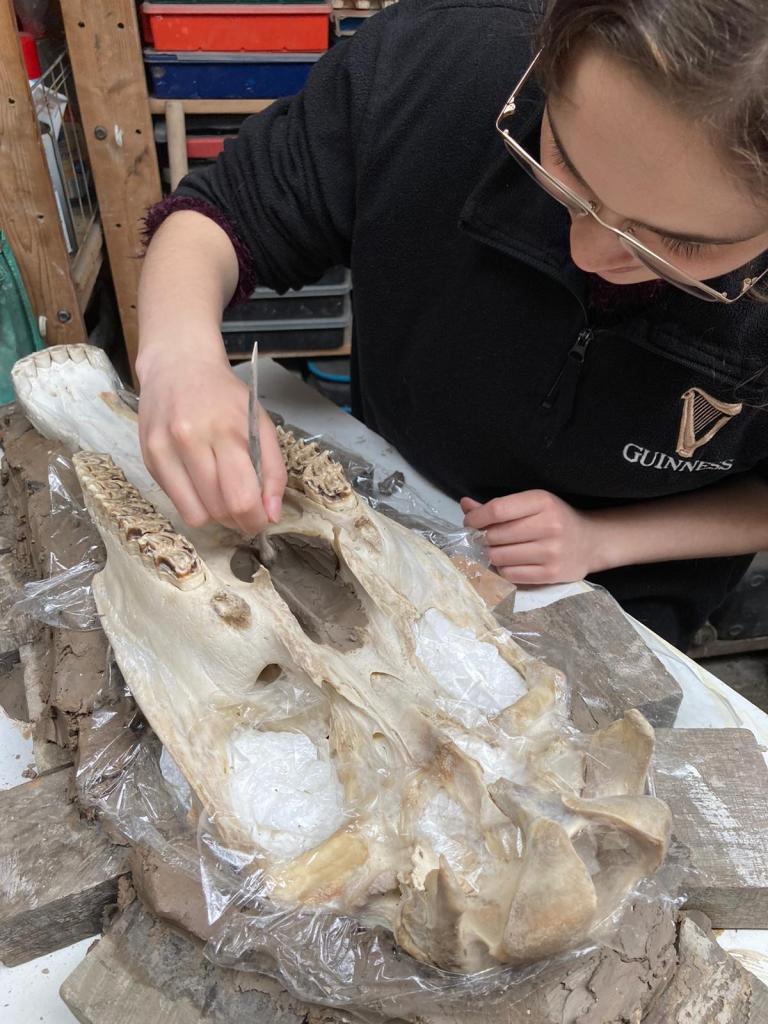The casting of the ‘Maximus’ horse skull with Florence Bigglestone (@floss_art) continues, safely and with social distancing…
Part 1: The final caps of the piece mold for the skull are prepared for a vinamold pour – with the seams filled in with clay, vaseline & white spirit applied, joiner’s dogs fitted, and runners & risers added. The pour then takes place. Once the vinamold has set, de-molding begins.
Part 2: These photographs show how the piece mold has been constructed; in particular how the intricate shapes around the nose have been held in place (to create the needed grooves/hollows in negative). The vinamold caps are brushed down and cleaned, in preparation for test casts to be taken.
Part 3: While test casts are taken from the vinamold caps of the jaw, Florence creates a filligree of her own design, in clay, directly onto the face of the skull itself (which has previously been restored, repaired and reinforced). The filligree design is directly inspired by Roman chariots. Latex will later be used to take molds of the clay filligree.
Part 4: Test casts are taken from the jaw, to test the strength, thickness and finish – the plaster is combined with different types of fibres for each test cast. This process will inform the full cast of the skull. In these images, the test caps seen were cast with jute scrim.
Part 5: Another filligree, of Florence’s design, is created for the sides of the jaw – modelled directly in clay over the bone. Clay walls are then run around the areas on both the face of the skull and the jaw, for molds of the filligree to be taken in latex. After that, the latex is built up in several coats, and then reinforced with cotton scrim.
Stay tuned for the next part of the mold making process!

